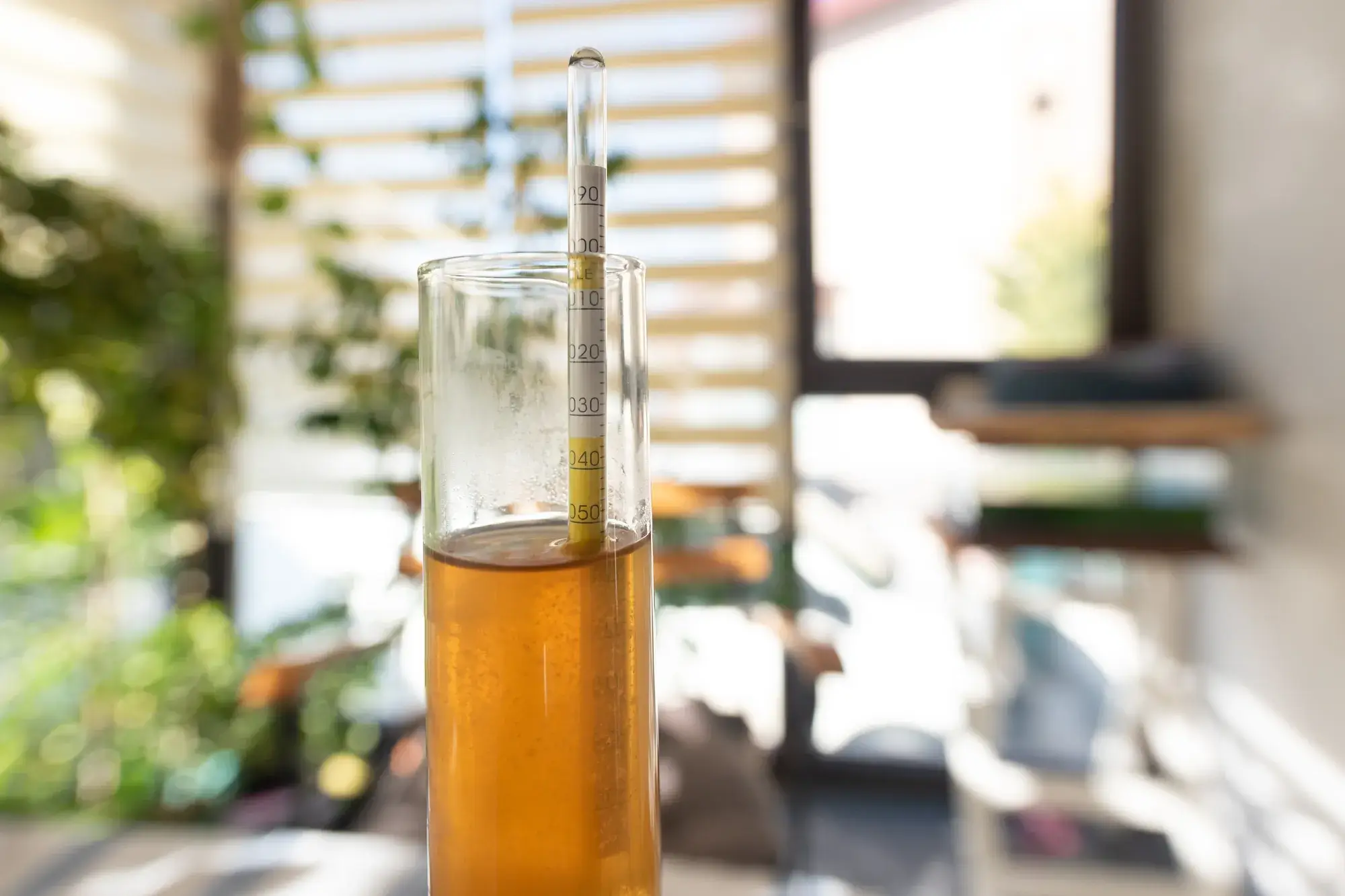Specific gravity is a commonly used term in beer brewing. But what is it and what can you do with it?
What is the specific gravity in beer brewing?
The specific gravity (SG) refers to the density of a certain material like beer. Everything has a certain density. For example this density causes certain things to float in the water (lower density) and causes others to sink (higher density).
When brewing beer the wort will contain fermentable sugars. These sugars have a higher density than the water in which they are dissolved. During fermentation yeast will convert the the sugars into alcohol and carbon dioxide. These have a lower density.
By this conversion the SG will be get lower over time. This decrease is exactly what we need. It is just because it provides us insights in the fermentation progress. And of course we can calculate the alcoholpercentage.
ADvertisement
When do you measure the specific gravity?
In beer brewing there are basically two important moments when you should measure the specific gravity. The first moment is before inoculating the wort. During this moment we determine the original gravity (abbreviated: OG).
The second moment is after fermentation. This time we measure the final gravity (abbreviated: FG).
There is no restriction to these moments only. It is possible to perform measurements during the brewing progress. You can do this during mashing to see if the expected OG will be met.
During the fermentation you can use the SG to learn more about it’s progress. In fact by performing multiple measurements (over different moments) you will see there is no difference in the measured values at a certain point. This means that the fermentation is done already.
How do you measure the specific gravity?
You can use a hydrometer to determine the specific gravity. This is an instrument that you have to put in a measuring glass. This glass contains the liquid to measure. In our case this will be the wort (and later the final beer). Based on the specific gravity of the wort and later beer, the hydrometer will float higher or lower.
Alternatively you can use is a refractometer. This is an optical measuring instrument to determine the density of a liquid. It determines the density using light.
What can you do with the specific gravity?
One of the main uses of the originan and final gravity is to calculate the alcoholpercentage . Other reasons for determining the SG is to get insight into the fermentation progress or to see whether the mashing is going well.
Most of the times the brewing recipe contains the expected OG. By measuring the OG you see how well (or badly) you mashing went. Also based on the measured value you will have a clear idea of your efficiency.
The specific gravity also gives you an idea if you need to do adjustments during beer brewing. It’s best to do these adjustments before fermentation.
When to adjust the specific gravity in beer brewing?
When you see the original gravity deviating from the expected one than you have to decide what difference you think is acceptable. An example: when the expected OG is 1.060 and you have a reached SG of 1.055, you might consider not to adjust.
Sometimes the difference is too big that a correction is desirable. That isn’t a problem at all. Just addd sugar or DME when the OG is too low and add water when it’s too high.
Adjusting the specific gravity in beer brewing is not a big deal. It can just happen. But if the OG continues to deviate, you might want to know what is going on. Maybe your brewhouse efficiency is higher or lower than expected. In that scenario you have to change the recipes to match your efficiency.

